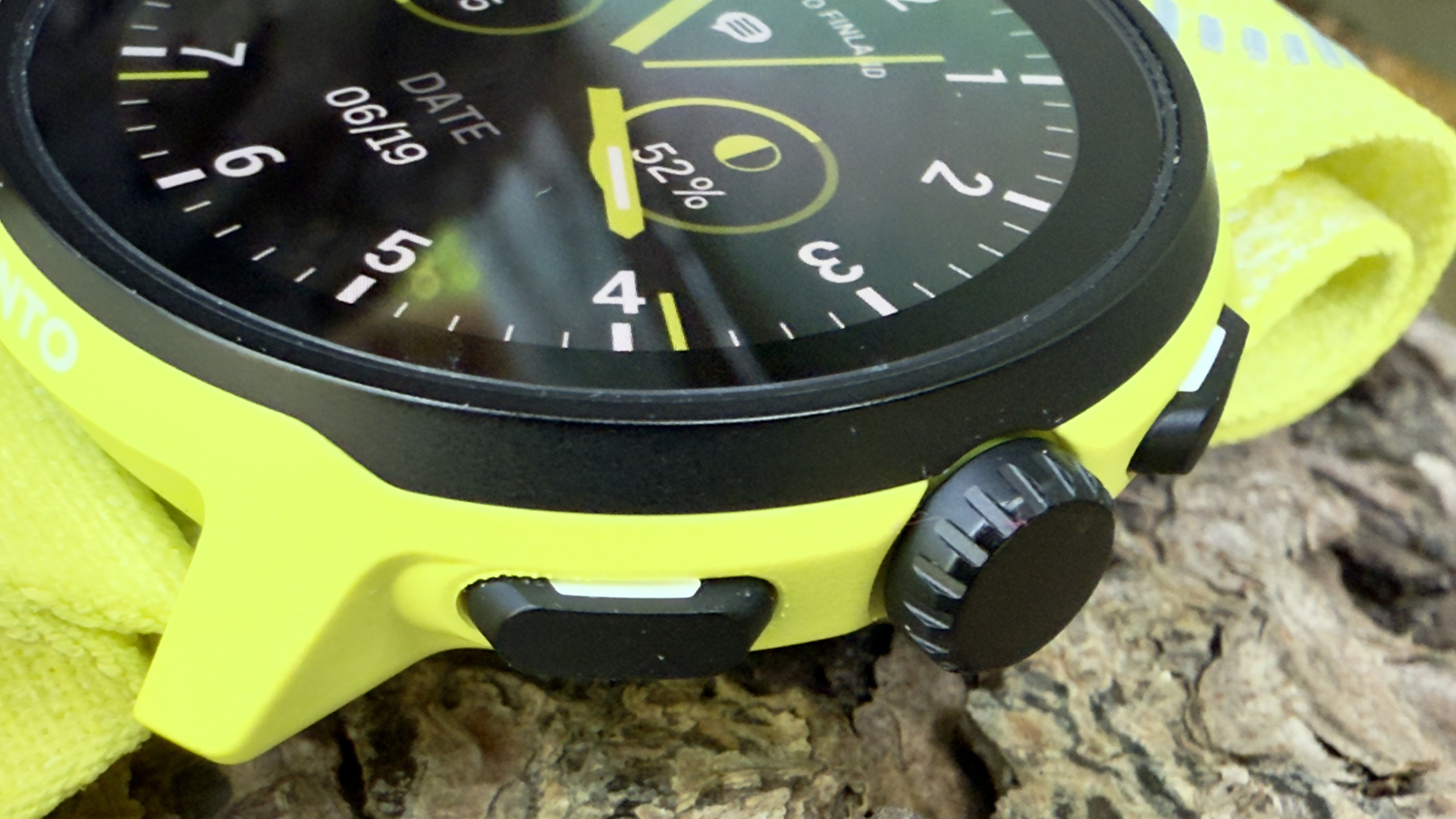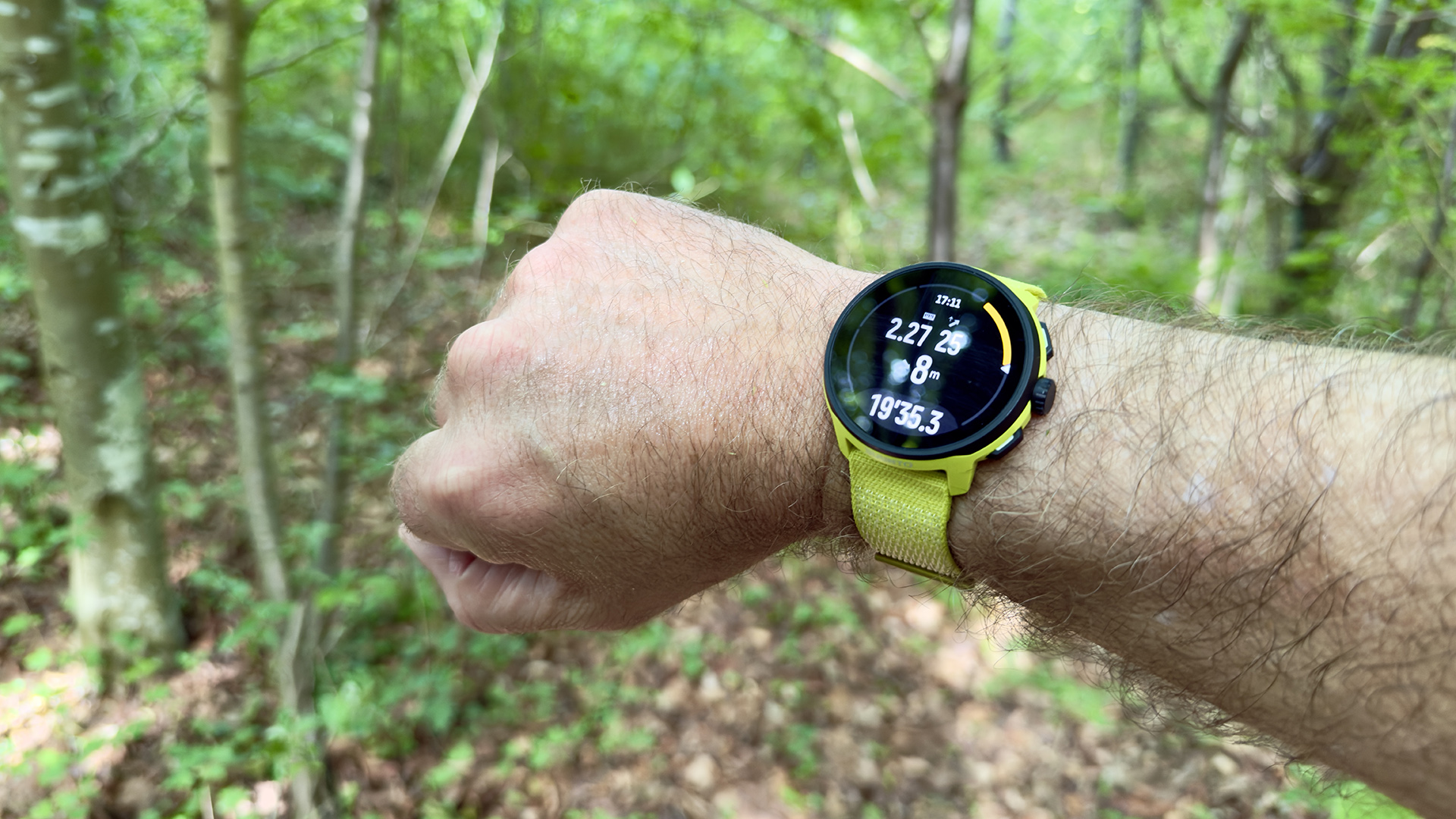The Suunto Run made me rethink Garmin’s dominance in running wearables
I didn’t expect much from this budget Suunto watch, but now I’m a convert


The Suunto Run delivers impressive performance in a lightweight, stylish package. With accurate GPS, an AMOLED display, and genuinely useful training tools like Ghost Runner and Marathon Mode, it’s a compelling alternative to Garmin for dedicated runners. A great option for anyone wanting premium features without the premium price tag.
-
+
Affordable high-performance
-
+
AMOLED touchscreen
-
+
On-point GPS tracking
-
+
Music downloads
-
-
No cycling power meter compatibility
-
-
No downloadable maps
-
-
Moderate battery life
Why you can trust T3
Sometimes the affordable option can feel premium, and there’s just something about the design of Suunto’s entry-level, run-focused running watch that sat well with me from the beginning, with its stainless-steel bezel and touchscreen convenience.
Suunto has a deep pedigree in fitness and GPS tracking, and with the Suunto Run, they have been able to provide a stripped-down, running-specific smartwatch solution that undercuts the competition, loaded with a new optical heart rate sensor, pulse oximeter and a high-end GPS chipset with dual-band tracking for greater accuracy.
Most importantly, this compact wearable undercuts the best Garmin watches by a mile, making me ask the question: Is it worth spending the extra money on a Garmin? The Suunto Run might have some shortcomings, but at this price point, it's hard to offer any alternatives as capable as this one.
Suunto Run review
Price and availability
The Suunto Run launched in May 2025 and is available to buy from Suunto UK, Suunto US and Suunto AU for £199/ $249/ AU$ 449.99, including the nylon strap (which can be replaced with any 22mm strap). It’s well priced compared to similar offerings, including the Garmin Forerunner 165.
Specifications
- Display: 1.32 inch AMOLED, 466 x 466 resolution
- Lens: Gorilla Glass
- Case: Glass fibre-reinforced polyamide
- Bezel: Stainless Steel
- Battery life: Up to 12 days but 20 hours using GPS + tracking
Design and build quality

This is 100% a runners watch, and the lime yellow-green colourway that I reviewed definitely announces its athletic intentions, but that’s no bad thing, and the aesthetic is undoubtedly stylish, if you’re a runner.
Small details like the reflective Suunto logo on the lightweight strap underline this wearable’s purpose. This makes omissions like Bluetooth cycle power meter compatibility perfectly reasonable at this price point. The Suunto Run isn’t a multisports wearable, and it isn’t trying to be one.
That said, it does have 32 sports preloaded and offers useful features like switching between sport modes mid-session and post-analysis of multisport exercise by sport. It could even be a lightweight option for a duathlete or triathlete with its advanced swimming features like Stroke Efficiency (SWOLF) and openwater swim distance.
Get all the latest news, reviews, deals and buying guides on gorgeous tech, home and active products from the T3 experts
The Suunto Run weighs in at just 36g but manages this feat without feeling cheap. The case still feels substantial with angular-cut edges, positive feeling side buttons and a stainless steel bezel. The case survived me smacking it into a wall and several floor drops (sorry Suunto) with no visible scrapes, scratches or cracks.
The design decision to include a rotating crown button for scroll control of the options and apps on the display was a spark of genius. After all, who wants to try to fast-scroll through apps on the touchscreen with sweaty digits, mid-run?
I do have to point out that as a left-hander who prefers to wear watches on my right wrist, the crown was a bit fiddly to access with fingertips, but it works just fine rolling along the side of the thumb, helped by the satisfying haptic click as you scroll through the options.
In any case, the Gorilla-glass touchscreen means it does still perform well, even with the aforementioned sweaty mitts.
As you scroll down on the touchscreen, the widgets appear, which are the 6 pinned apps that can be chosen from the available list and rearranged so you have your most-used ones at the top.
Click on them and you are taken through to more detailed data, which allows for quite a lot of data to be intuitively accessed without opening your phone.
The Suunto Run was packaged with two nylon wrist straps for different size options. The strap itself is very comfortable to wear and dries incredibly quickly, which is invaluable on sweaty days.
Features

The Suunto Run delivers all of the expected smartwatch features, including notifications of messages (which are usefully previewed) and calls, but it’s worth digging into the run-specific features here, because there are some good ones.
If you’re using the watch to train for a specific distance or event, then the Ghost Runner feature gamifies the challenge by having you chase or be chased by a target pace and finishing time.
Building on this, is the Snap To Route navigation feature that allows you to set a route on your smartphone using the Suunto App, synch with the Suunto Run, then set out following the on-screen breadcrumb navigation prompts from the watch as it aligns the GPS track with the pre-defined route.
I found this feature ideal for navigating my way around off-road trail running routes while still sticking to a target distance, rather than just meandering around the countryside on accidental epics. While the Suunto Run doesn’t have offline maps, you can still navigate routes once synced without a smartphone - you just can’t edit them.
And if you’re actually running in a marathon, then the specific Marathon sports activity allows you to set a training distance, then see real-time updates of a marathon finishing time based on your current pace, which is as useful when training at marathon pace as competing in one.
Other features include the Metronome, which offers a way to run to a specific, adjustable cadence to improve running form - I found it a bit annoying to run to a click, but I can see the utility.
When it came to training, I enjoyed the Lactate Threshold Detection feature, which enabled me to adjust my effort in real time when doing threshold sessions, which can be a powerful route to increasing fitness levels (VO2 Max).
If this sounds all a bit too hardcore then I found the ability to set targets for each workout, on the fly, really useful on days when I just wanted to get out for a quick run, but still wanted to work towards a goal of distance, duration or vertical ascent.
Other run-friendly features include the offline music player and compatibility with Bluetooth headphones, which allows you to download tracks from your computer or phone to the Suunto Run via the USB-C charging cable, and leave your phone at home. Turn on the Auto Laps and you’ll get voice updates on your lap performance too.
Alternatively, you can stream or play music on your smartphone and skip tracks, change volume and pause music on the Sunnto Run touchscreen.
The tilt-to-wake feature for the touchscreen was responsive and meant that I didn’t have to interrupt the flow of my runs to check on distance or heart rate, but you can set it to always on if you prefer.
Peformance and accuracy

The Suunto Run excels at tracking distance and performance, and will readily display kilometre split times, along with a haptic buzz. The high-end GPS chip delivered accuracy that was spot on for distance, speed and altitude, as well as heart rate on steady efforts.
One criticism I have for all the varieties of wrist HR monitoring is that the technology suffers a slight lag when suddenly driving your heart rate up, during high intensity intervals. They always seem to lag behind your heart rate falling too.
For this kind of training, you’re better off pairing the Sunnto Run with a Bluetooth heart rate monitor (it does have compatibility). The watch itself allows you to set custom intervals for this kind of workout.
The Sleep Tracker functioned to the expected high standard although sleeping with the watch on isn’t as easy as with some competitors, due to the very defined edge to the stainless steel bezel. The strap was, once again, supremely comfortable and on the level of a Whoop wearable.
The Suunto App was pleasingly laid out with easy-to-navigate breakdowns of performance and recovery. It also connects to Strava, MapMyRun, Adidas Running and others, if you’re already heavily invested elsewhere.
Battery life and charging
With its AMOLED screen, the battery life on the Suunto Run is less than some competitor running watches. Suunto claims up to 12 day’s of battery life but that’s without training and continuous GPS tracking, which is a more useful metric for a running watch. The claimed 20 hours of life while using dual-band GPS and fitness tracking was a closer match to my actual experience.
The power-hungry tracking doubles up with with power drain from the hi-def AMOLED screen to demand a recharge every third day or so. There’s inevitably a slight downside to having such a lightweight watch and presumably light battery, but because I felt able to wear this watch day-to-day, I didn’t have any issues with reaching for it and finding it out of charge. And the battery percentage reading, combined with the low-battery warning, was enough to prompt me to charge.
The charging cradle itself is magnetic and had an easy, secure fit, while the UBC connector worked fine with smartphone fast chargers, which can quickly pump in enough juice to see you through a training session and a full day while you get ready to go out. (My iPhone USB charger restored 75% in 40 minutes.)
Verdict

At first, I enjoyed using the Suunto Run because of its run-friendly form factor, weight, and strap, but the more I researched its running and training features, the more I appreciated features that I hadn’t even considered before.
This is partly because the touchscreen is so easy to use and the menus uncluttered, but also because Suunto has leaned into its endurance sports heritage to offer genuinely useful features that take some of the friction out of monitoring performance, training goals and challenges. Features like the Marathon activity can intuitively take the guesswork out of your running potential and current fitness level, which I found motivating.
The battery life may seem low for some, but I’m happy to sacrifice some power for a truly lightweight running wearable that still offers high-end GPS tracking and a hi-def AMOLED screen. The Suunto Run's price-to-performance ratio makes it the leader of the pack if you want stripped-down running simplicity.
Matt Ray is an outdoor journalist and photographer whose work appears in magazines and websites, including RedBull.com, Men’s Fitness and Nat Geo Traveller. He can find an adventure anywhere, from racing a mountain bike down a ski slope, to climbing under bridges in Edinburgh.
You must confirm your public display name before commenting
Please logout and then login again, you will then be prompted to enter your display name.

